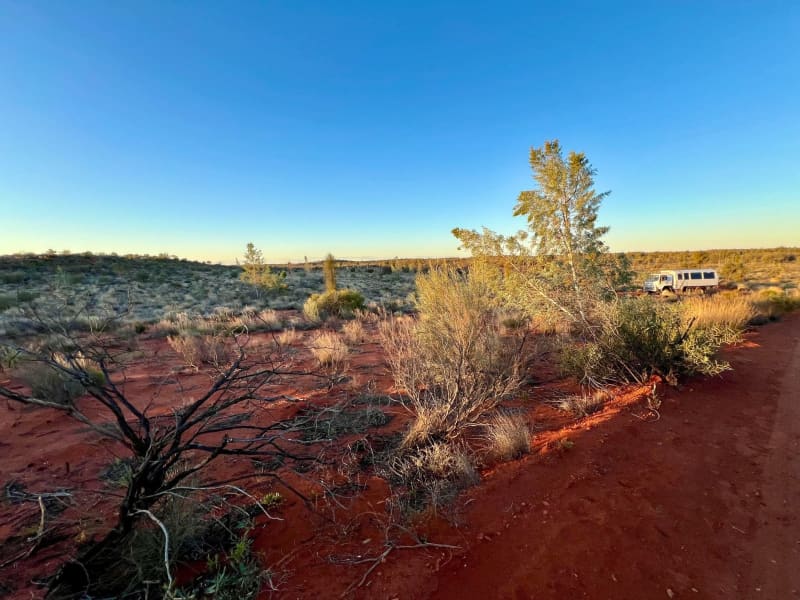Beyond the outskirts of Alice Springs, a vast expanse awaits.
The Outback city, the capital of Australia’s Northern Territory, is perhaps best known for its proximity to the sacred red rock of Uluru – with the concept of proximity being amply applied here.
It is surrounded by the vast central Australian desert – red sands dotted with spinifex grass, thorny acacias and bushland as far as the eye can see.
Few people inhabit this unpredictable part of the Earth. It has been home to many of Australia’s indigenous peoples for tens of thousands of years and most of the white people who have settled here are pastoralists.
Living an isolated life in the Outback presents a number of challenges, especially for those wanting to raise a family here.
Decades before schools around the world switched to remote learning during the coronavirus pandemic, Australia’s Outback children were already being taught using a similar – but initially more fundamental – approach.
In 1951, the first School of the Air opened in Alice Springs to provide education for children living in remote areas.
“This is a truly exceptional school that is changing lives and creating a better future for the children of the Outback,” visitors are told at the School of the Air visitor centre.
Without the School of the Air, children might have to leave home at a very young age to attend boarding school, says Kerrie Russell, director of the school for seven years.
Currently, approximately 100 students aged 4 to 15 are taught remotely by 14 teachers. Although they are usually separated by hundreds of kilometers from their classmates, they are part of ‘the world’s largest classroom’ which stretches across 1.3 million square kilometers in the southern Northern Territory.
The Alice Springs location was the first of 16 Schools of the Air that have since been established across Australia – including from the mining town of Broken Hill in New South Wales to Kalgoorlie in Western Australia.
From pedal radio to Starlink
The idea for the School of the Air came from Adelaide Miethke, a member of the Flying Doctor Service of South Australia.
The Flying Doctors are another ingenious scheme that has been providing healthcare to the population living in remote areas since 1928.
Miethke, a former teacher, traveled to Alice Springs in 1944. During her visit to a remote cattle station, as farms in this part of the world are called, she recognized the difficulties parents face in taking their children to school in the Outback.
She proposed teaching classes via radio using a new invention by Alfred Traeger, who had devised an easy-to-use radio transmitter-receiver powered by a pedal-driven generator.
The Flying Doctors already used this device, called the pedal radio, for their communication. Miethke suggested it could also be used to teach children remotely.
The School of Air in Alice Springs started at the Flying Doctors base and only moved to its current location in the city in 1978.
“At first they talked in complete silence, without any interaction with the students,” said Paddy McFarland, who works at the centre.
But teachers soon recognized the need for their students to interact with them and a question-and-answer section was introduced.
When Princess Diana and Prince Charles visited the School of Air in 1983 and answered questions from Outback children over the radio, communications were still accompanied by extremely loud static.
It was only when the school started using the internet from 2000 and became completely dependent on satellite technology in 2006 that video calls became possible and students and teachers could finally work face-to-face.
Recently, the school started using Starlink, the satellite network operated by company SpaceX, owned by tech billionaire Elon Musk, to bring internet connectivity to even the most remote areas.
Growing up in the Outback
Australia is the sixth largest country in the world, but one of the least populated. Many rural areas are dotted with gigantic cattle ranches. The largest in the world, Anna Creek in South Australia, extends over a whopping 23,000 square kilometers – about the size of Israel.
An average Outback cattle station covers about 3,000 square kilometers, and most School of the Air students grow up on one.
Others live in remote indigenous communities or isolated mining towns.
Dust, flies, droughts and floods are part of everyday life in this inhospitable part of the world.
“Children tend to be very happy in these isolated areas,” says school principal Kerrie Russell. “There is always a lot to do at the cattle stations and they can help out and make themselves useful from an early age.”
School materials are sent to the students’ homes and they all receive a free computer. At the School of the Air, which is funded by the states, class sizes range from eight to 20 students per class.
Teachers work in a studio equipped with several cameras that provide different angles on the lessons presented, while an online platform is used to provide feedback on the children’s work.
Tutors at home
Lessons at the School of the Air last a maximum of two hours per day. In addition, students must study individually for three to four hours under the supervision of a home teacher.
This could be a parent or legal guardian, or someone specifically assigned to that task.
Once a year, teachers visit each student personally, while the entire class and parents meet four times a year at the School of the Air in Alice Springs.
During a week of personal learning and excursions, there will be plenty of opportunity to make new friends.
“These direct interactions are very important,” says Russell.
Some families have to drive for hours through the red sand to reach Alice Springs.

